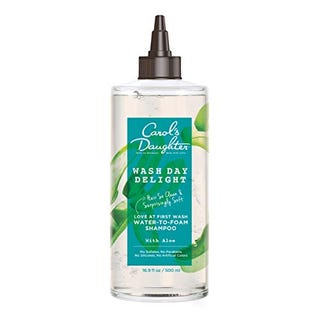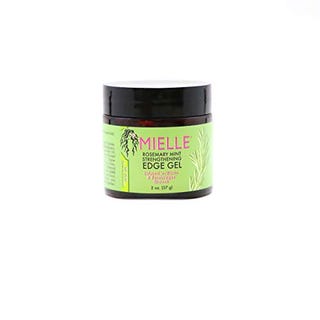How Long Does Your Hair Have to Be to Get Box Braids
When it comes to popular hairstyles, some come and go (cough, mullet) but others withstand the test of time. One of those styles that we don't see dying off anytime soon is box braids. They're cute, sleek, and super convenient. Plus, celebrities are sporting box braids left and right, which only makes us want to take the plunge even more.
And while the style is certainly not a new trend, it's one of those styles you'll want to learn all about before taking the plunge because it actually takes some serious commitment. Ahead, we tapped box braid expert and celebrity hairstylist at Mahogany Hair Revolution in Los Angeles, Dr. Kari Williams, to give you the scoop on what box braids are, where they come from, how to get them and how to take care of them.
This content is imported from Instagram. You may be able to find the same content in another format, or you may be able to find more information, at their web site.
What are box braids?
Although box braids are popping up all over your Insta feed, these waist-grazing braids are no new invention. Williams suggests that braids originated in Africa and date back thousands of years to local tribes. And truth be told, the style hasn't evolved much since its debut so in a way, this style still represents the beauty of African culture.
Visually, box braids simply look like a bunch of braids all-over the head. As for the box in the box braids, well, that has to do with the parting method. Traditionally, box braids are created with a square of box parting pattern, but this isn't a requirement.
- "Traditional box braids are created by wrapping extension hair around the base of the natural hair and creating a knot attachment at the scalp," Williams says.
- Knotless braids incorporate the extension into the base of the natural hair without a knot. According to Williams, the knotless style has grown in popularity and is now the preferred technique amongst clients.
These braids are not only a go-to for giving women a break from styling their hair, but box braids are also known as a protective style sought after in the natural hair community. In short, a protective style is a styling option that keeps your ends protected and the hair from environmental factors, heat styling, friction against clothing and any other factors that may be causing damage or breakage.
This content is imported from Instagram. You may be able to find the same content in another format, or you may be able to find more information, at their web site.
Who are box braids good for?
There are no rules or requirements for becoming a box braid candidate, besides that fact that you have to have hair. Williams recommends the hair be at least 1 ½ inches long for a comfortable attachment of the extension which means you can sport box braids even after a big chop. As for texture, every hair type is fair game: No matter if you're straight, wavy, curly or coily, you can sport box braids with ease.
There are different sizes of box braids:
- Small braids are often called micro braids and they're itty bitty plaits.
- Medium braids, which are the most popular size request, have about the same width as a pencil or pen. We can thank Poetic Justice star, Janet Jackson, circa 1993 for this iconic look.
- Large braids are chunky and thick and make quite the statement. These plaits can have a width between the size of a Crayola marker and a jumbo Sharpie.
This content is imported from Instagram. You may be able to find the same content in another format, or you may be able to find more information, at their web site.
What's the process like?
Before you head to the salon, here's what you need to know:
- Make sure your strands are squeaky clean and properly conditioned before installation since box braids are a long-term style. The rule of dirty hair holds styles better is a no-go in this situation.
- Hair should be fully dry and moisturized before adding extensions. But instead of choosing a cream or serum, opt for a hydrating oil that will quickly absorb into the hair and deliver a burst of moisture.
- The process should be pain-free. "If the process hurts, alert your stylist immediately," Williams says. It could mean that the stylist is pulling too hard on the hair and it may lead to damage or breakage down the road.
- Leave 5-12 hours open for your stylist to properly install the braids. Yes, this is no impromptu style: Remember it's long term so even though it's a huge time commitment, the end result will last you quite some time. Some salons even suggest using two or more stylists per client for a speedier process. But this isn't a requirement, so we do recommend calling ahead before to inquire.
How long do box braids last?
After your full-day appointment, you can expect your box braids to last a total of four to six weeks without a touch up, if maintenance is kept up (including trimming away extension fly-aways, keeping edges smooth and hydrated, and ensuring your scalp health is in tip-top shape).
To extend the life of your braids, protect them while you snooze: Use a silk or satin cap, scarf, or pillowcase to avoid as much frizz-inducing friction as possible while you sleep. And if all else fails and your braids are looking old within a few weeks, visit your stylist for a hairline touch-up.
This content is imported from Instagram. You may be able to find the same content in another format, or you may be able to find more information, at their web site.
How much do box braids cost?
The cost of your installation is determined by the size and length of your style, as well as where you live, but Williams says you can expect to pay anywhere between $200-900 for the installation. And keep in mind that highly skilled technicians will come at a higher price point.
Is it true that box braids can damage your hair?
It's been said that some protective styles using extensions, like box braids, can cause damage to the hair or scalp, but Williams says this is only the case if the braids are installed or removed incorrectly. "The hair becomes ruined when the braids are installed improperly with too much tension or weight." To prevent damage, make sure you follow these pro tips:
- Interview your stylist before booking your appointment. "Ask to see pictures of their work, talk to current clients, and find out if the stylist has received any specific training in installing braids the healthy way," Williams says. "You want to work with someone who is experienced so you have the best results." So don't shy away from doing your research.
- Opt for the knotless technique if breakage is a top concern. "When done properly, it prevents traction alopecia, which is a common form of hair loss for women who have braids that are installed too tight with the large knots," says Williams. She does warn that the knotless technique does take longer to install, but it's worth it for the health benefits of the hair and scalp.
- Use proper hydrating products after installation. These are essential to maintain the style so the hair doesn't become dry and brittle and more susceptible to breakage. Try applying an oil-based hydrator to your braids a few times throughout the week to not only hydrate your plaits, but to give them added sheen, too. Williams suggests sticking to oils and water-based products only — they can be easily absorbed into the hair instead of sitting on top making your braids gunky or sticky.
- When removing your box braids, make sure to use a product to soften build-up and matting of the hair. This can be a conditioner, detangling spray or oil. The goal is to create some slip on the hair so your extensions glide out with ease and you can avoid any pulling or tugging.

Shampoo for Box Braids
Wash Day Delight
Carol's Daughter amazon.com

Root Rinse for Box Braids
Apple Cider Vinegar Root Rinse

Dry Oil Spray for Box Braids
Miracle Dry Oil Spray Plus Keratin with Argan Oil
It's a 10 Haircare walmart.com
$55.30

Edge Gel for Box Braids
Rosemary Mint Strengthening Edge Gel
Mielle Organics amazon.com
Do box braids require after care?
Like all protective styles, box braids are meant to be low maintenance and cut you some slack in the morning when it comes to styling your hair. But there is some maintenance that is required to keep your braids looking and feeling fresh for longer. The biggest maintenance requirement is moisturizing: Yes, even though your hair is intertwined with extensions, it still needs moisture! This is even more critical if you plan to wash your braids with shampoo to avoid product buildup.
Be sure to give your scalp a little TLC, too. Williams says you can wash your braids with shampoo, but make sure the cleanser is a gentle, hydrating formula and your frequency isn't too often that your braids begin to loosen or frizz. For most curly hair types, washing braids once a week should suffice.
As you wash, you want to avoid any rough movements or scrubbing. Focus on cleansing the scalp first and then move hands in a downward motion to gently cleanse the length of your braids. Even better if you can find a cleanser or scalp purifier that can be applied with a nozzle tip to ensure you're sloughing away all dirt and debris from the scalp. In most cases, you don't need conditioner, but if the ends of your braids need some sprucing, feel free to add a dollop of conditioner to the ends only!
Andrea Jordan Andrea Jordan is a freelance writer covering all things beauty, lifestyle, health and parenting.
This content is created and maintained by a third party, and imported onto this page to help users provide their email addresses. You may be able to find more information about this and similar content at piano.io
How Long Does Your Hair Have to Be to Get Box Braids
Source: https://www.goodhousekeeping.com/beauty/hair/a34292308/box-braids/